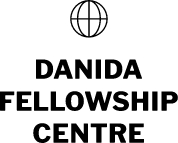Assessment of a computer-based Taenia solium education tool ‘The Vicious Worm’ in Mbeya Region, Tanzania
Description
Abstract:
Taenia solium is endemic in many countries in sub-Saharan Africa, Latin America and South-East Asia. There is a lack of knowledge regarding T. solium in endemic countries and it has shown to be a risk factor for the transmission of T. solium. Few studies have assessed the effect of health education, but the studies that have been conducted indicate a good effect of health education. The aim of this study was to assess the effect of a computer-based T. solium education tool ‘The Vicious Worm’ on knowledge uptake among professionals and to investigate their attitudes towards the program. A total of 79 study subjects were included in the study, which was conducted between March and May 2014. The study subjects included were veterinarians, meat inspectors, agriculture/livestock extension officers, agriculture/livestock diploma students, medical officers, health officers and assistant medical officer students. The study was carried out in Mbeya Region, Tanzania, where T. solium is endemic. The study was a pre– and post– health intervention trial that built on questionnaire surveys, focus group discussions, interviews and observations.
A moderate to relatively high percentage of the study subjects had an already-existing knowledge of some aspects of T. solium cysticercosis/taeniosis (score: 48.1–78.5%), however, there was lack of knowledge of acquisition of neurocysticercosis, relation between cysticercosis and taeniosis and prevention of T. solium cysticercosis/taeniosis (score: 15.2–31.6%). Knowledge about T. solium cysticercosis/taeniosis among all study subjects was significantly improved both immediately after the intervention (p=0.001) and two weeks after (p<0.001). Knowledge regarding specific aspects of T. solium cysticercosis/taeniosis was significantly improved in all aspects immediately after the intervention (p<0.05) apart from acquisition and transmission of T. solium infections and relation between cysticercosis and taeniosis. Two weeks after the intervention, knowledge of all aspects but the relation between cysticercosis and taeniosis was significantly improved (p<0.05). Being employed in the health sector was a significant factor for knowledge improvement (immediately after intervention: OR=8.3; two weeks after intervention: OR=5.0).
The focus group discussions and interviews showed a general positive attitude towards the program and the study subjects found ‘The Vicious Worm’ efficient, simple and appealing. The results from this study show a good effect of ‘The Vicious Worm’ on knowledge uptake regarding T. solium among professionals in Mbeya Region and a positive attitude towards the program.

